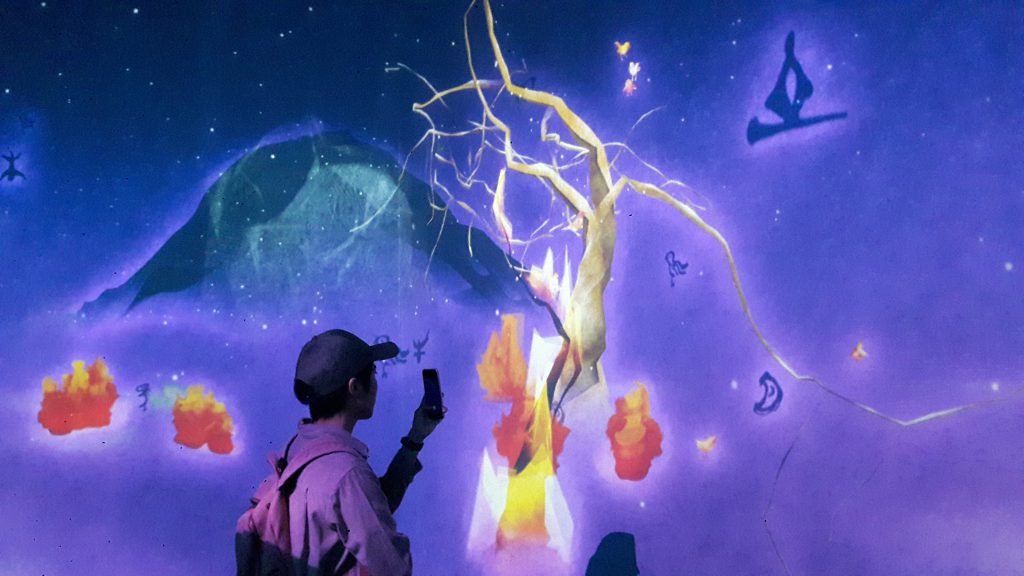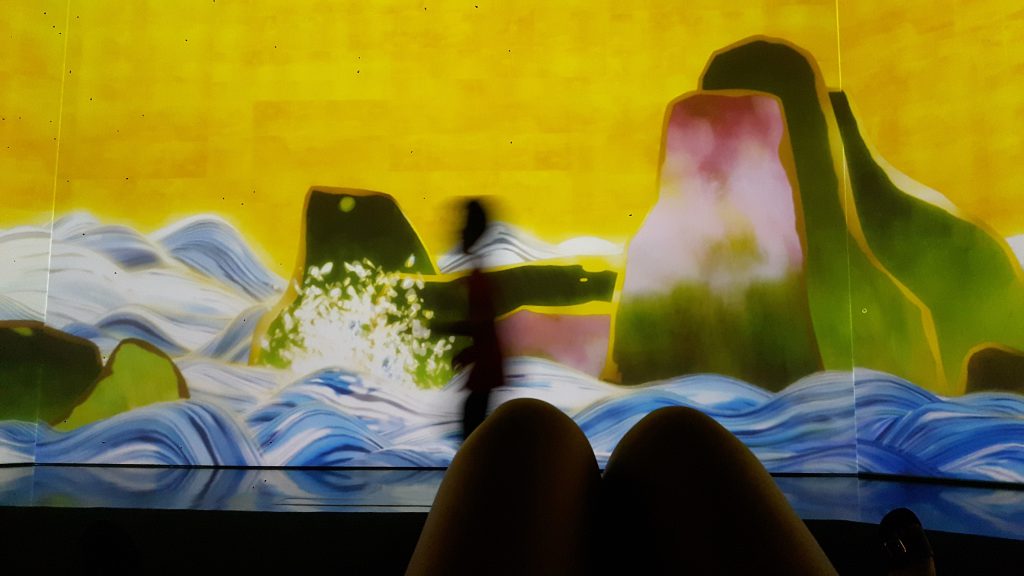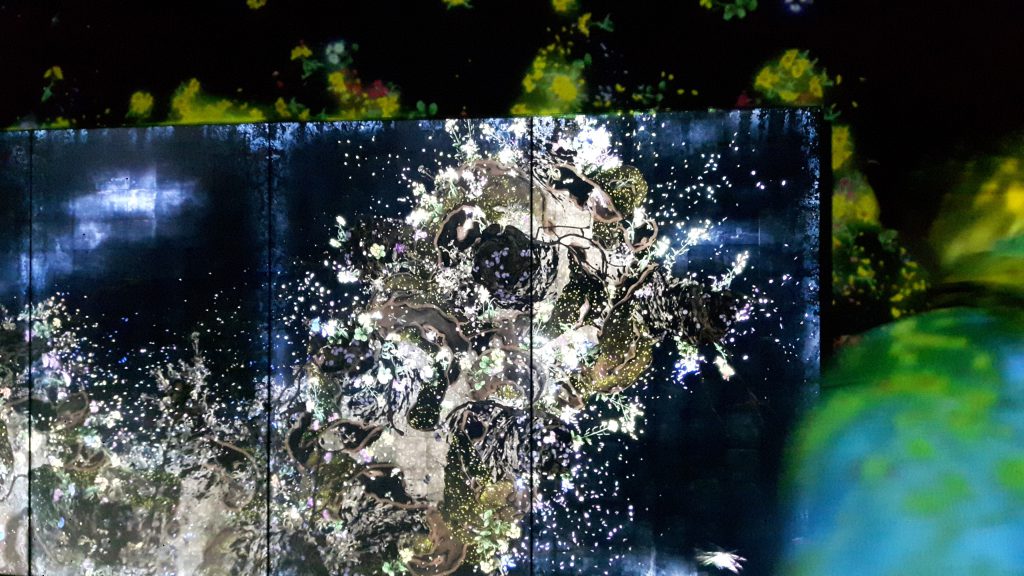FutureWorld exhibitions had been much-talked about in my circle of friends. I was delighted to know that we would be visiting it for field trip, and it did live up to my high expectations and even more. From this visit, I had three main takeaways namely the interactivity, the culture considered in designing these experiences, and the running theme of environment.
- Interactivity
FutureWorld exhibition was successful as it made use well of interactivity to make the visitor feel engaged. For example, the installation “Story of the Time When Gods Were Everywhere” would come to life if people are tapping on the signs symbolizing the elements such as fire, mountain, and various animals. I felt excited as I built my own little corner with mountains, trees, and animals. However, somebody tapped on a fire symbol that burned it all down. I was rather unexplainably upset, but that was a sign that the display succeeded in making the participant felt like they are part of this world and environment, loving and taking ownership of all these elements and ‘creations of the Gods’. I also feel that this might have been inspired by the many Asian legends and myths regarding multiple gods of different elements, as well as the Asian aesthetics such as Chinese scroll painting.
It also felt amazing that whatever I tapped in the seemingly unresponsive wall would blossom to life. It felt rather magical, in fact. Of course, it was not like a touchscreen with immediate feedback- I had to tap firmly about three times to make sure the symbols were properly tapped. However, I feel that it was quite novel to me and I really appreciate this new possibility.
Another one would definitely be the PARK room’s Light Ball Orchestra. I joined in the fun of playing in the ball pit, and the interactivity seemed to attract quite a number of little children as well. The way the balls give instant feedback of light change and sound change was very coordinated and yet playful. There was also a slide and tunnels, which contribute to the whole ‘playground’ feel to it. The digital response of light change and sound change was a fresh take on the traditional playground, which seems to be the main attraction of this interactive artwork.
2. Asian Influences
When our guide from TeamLab, Takasu, explained about how Asian culture, specifically Japanese culture, influenced the installations, I felt that it could be seen most strongly in the ‘100 Years Sea’ animation. The surrounding felt like beautiful tall Japanese panels, surrounding us as we lie down on bean bags provided. It felt relaxing at first, which is contributed by the lying down, the music, and the splashing of waves sound. However, it became intense and rather scary when the water level reached the top of the panel, surrounding us with dark blue waves and deep bass rhythms instead of music. Moreover, we were lying down which contributes to the drowning feeling amidst the tall panels.
Perhaps if it had taken form in a more Western way, as Takasu said, ‘direction’ would be the way; perhaps a series of panels which, as we walk along, displays higher and higher sea levels. I admit I could not envision it, but I am sure that it would have a very different interaction with the audience.
I feel that it is a good thing to take influences from your roots in your artwork. As we go into a more homogenized world, I believe there is a need to integrate our local cultures into the digital world so that it would not disappear. Instead of being against progress and technology, TeamLab had proven that embracing them and integrating local cultures with them makes for a stronger plan to move forward.
3. Environment
Flutter of Butterflies Beyond Borders struck me as beautiful and sad at the same time. It was beautiful as we all left our marks amongst the flowers; an element of interactivity that was delightful and novel as I never thought we could interact with the projections. However, it was sad as the more we use this interactivity feature, the more the flowers die. I noticed some people jumping around, and immediately around them, the flowers projections started to wither away. It was interesting as the artwork was meant to be interacted with- but that very interaction shows how we destroy nature. It reflects the real life- our actions have consequences to other beings. As opposed to the “Story of the Time When Gods Were Everywhere”, instead of nourishing, we destroy in this little room. Even the butterflies dropped when we touch them. It was amusing as when Takasu explained that we can kill the butterflies by touching them, we immediately started trying to touch the butterflies knowing it will kill them. We were not aware of this affordance, but once we were, we naturally had the urge to use it. In fact, I was unaware of most of the affordances present in the interactive pieces until explained properly by Takasu. In this piece, I guess it could also mean that sometimes we are not aware of what the repercussions of our actions are. ‘Itchy fingers’, as one of my friends would way, resulted in negative repercussions for nature in this installation.










You must be logged in to post a comment.